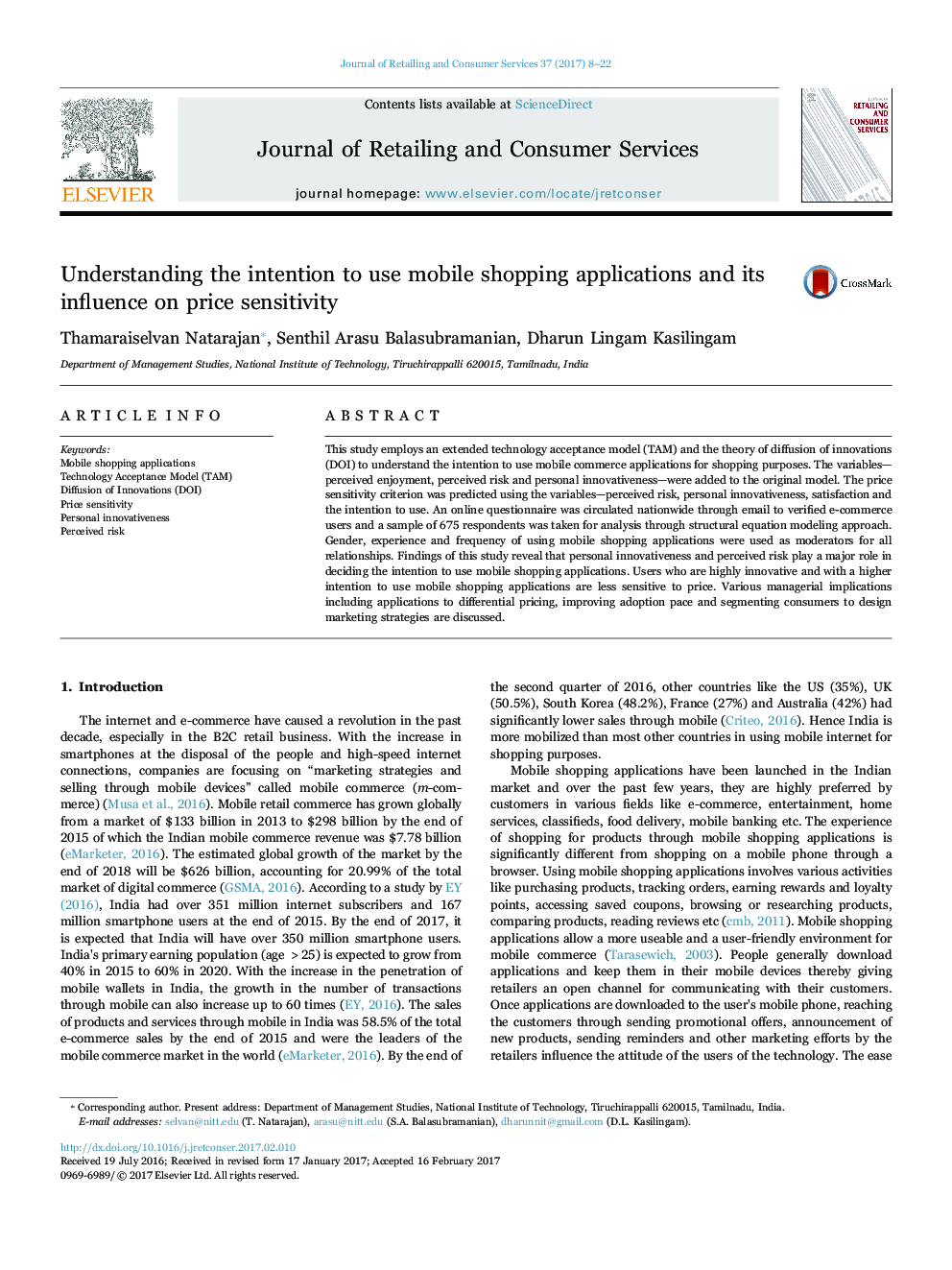| Article ID | Journal | Published Year | Pages | File Type |
|---|---|---|---|---|
| 5111266 | Journal of Retailing and Consumer Services | 2017 | 15 Pages |
Abstract
This study employs an extended technology acceptance model (TAM) and the theory of diffusion of innovations (DOI) to understand the intention to use mobile commerce applications for shopping purposes. The variables-perceived enjoyment, perceived risk and personal innovativeness-were added to the original model. The price sensitivity criterion was predicted using the variables-perceived risk, personal innovativeness, satisfaction and the intention to use. An online questionnaire was circulated nationwide through email to verified e-commerce users and a sample of 675 respondents was taken for analysis through structural equation modeling approach. Gender, experience and frequency of using mobile shopping applications were used as moderators for all relationships. Findings of this study reveal that personal innovativeness and perceived risk play a major role in deciding the intention to use mobile shopping applications. Users who are highly innovative and with a higher intention to use mobile shopping applications are less sensitive to price. Various managerial implications including applications to differential pricing, improving adoption pace and segmenting consumers to design marketing strategies are discussed.
Related Topics
Social Sciences and Humanities
Business, Management and Accounting
Marketing
Authors
Thamaraiselvan Natarajan, Senthil Arasu Balasubramanian, Dharun Lingam Kasilingam,
